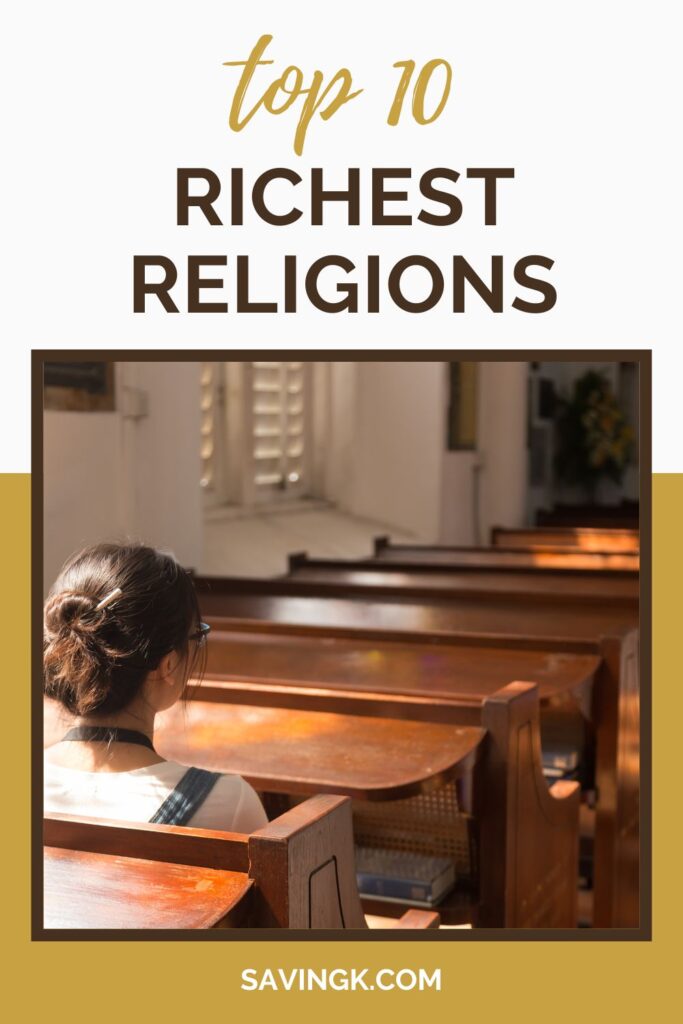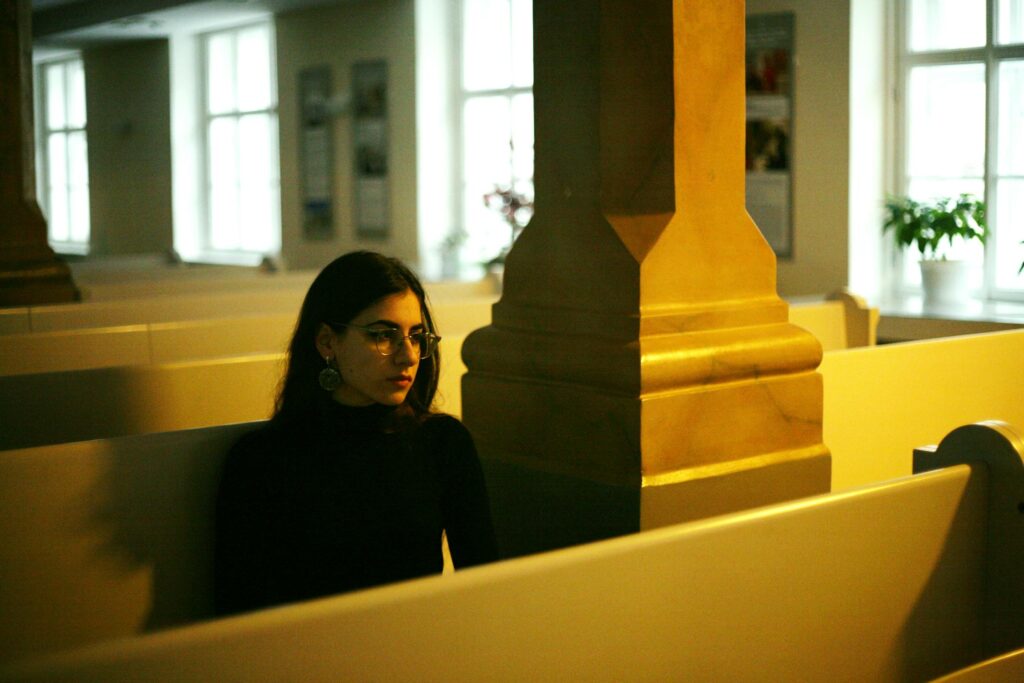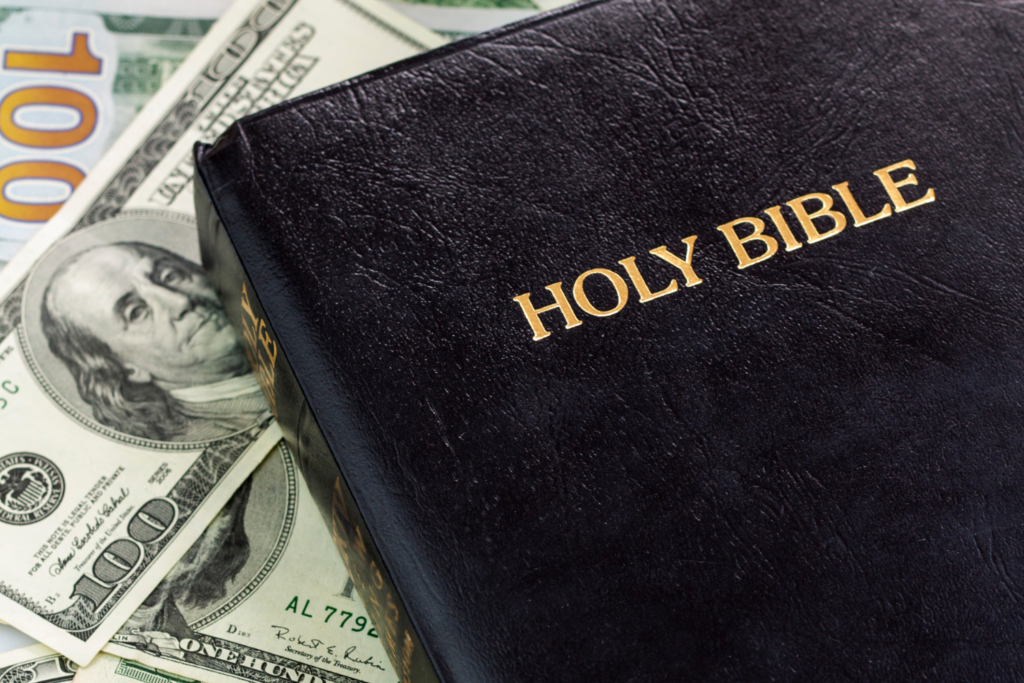
Did you know that the combined wealth of the world’s richest religions exceeds $150 billion? I can tell you that the intersection of faith and fortune reveals fascinating patterns of wealth accumulation that go far beyond traditional donations and tithes.
From the Mormon Church’s $100 billion investment portfolio to the Vatican’s priceless art collection, religious wealth manifests in surprisingly diverse ways. These institutions have mastered the delicate balance between maintaining spiritual traditions and embracing modern financial strategies, creating economic empires that rival major corporations.
Contents
- 1. The Church of Jesus Christ of Latter-day Saints (Mormon Church)
- 2. Roman Catholic Church
- 3. Islam
- 4. Seventh-day Adventist Church
- 5. Church of England
- 6. Catholic Church in Australia
- 7. Catholic Church in Germany
- 8. Judaism
- 9. Catholic Church in the Philippines
- 10. Greek Orthodox Church
- Additional Perspectives on Religious Wealth
1. The Church of Jesus Christ of Latter-day Saints (Mormon Church)
Core Beliefs and Foundations
The Church of Jesus Christ of Latter-day Saints stands distinct in its non-trinitarian Christian beliefs, placing significant emphasis on the Book of Mormon alongside traditional scripture. Family values form the cornerstone of their religious practice, influencing both spiritual teachings and richest churches in the world financial stewardship.
Financial Structure and Resources
The Mormon Church has built an impressive financial empire, with an estimated net worth of $100 billion. Their wealth stems primarily from a robust tithing system, where members contribute one-tenth of their income. But what’s particularly fascinating is their diversified investment strategy. Their portfolio extends far beyond traditional church holdings.
Investment Portfolio
The church maintains substantial investments across various sectors, with particular emphasis on real estate and agriculture. They’ve developed an impressive array of commercial properties, farming operations, and development projects. These investments have proven remarkably successful, generating substantial returns that support their global religious activities while ensuring long-term financial stability.
2. Roman Catholic Church
Sacred Traditions and Authority
The Roman Catholic Church, one of the oldest religious institutions globally, centers its faith on sacred sacraments and papal authority. These traditional elements have shaped not only its spiritual identity but also its approach to managing vast religious resources across continents.
Financial Foundations
The Church’s wealth stems from centuries-old systems of donations and offerings. But what’s truly remarkable is how they’ve maintained and grown their assets through strategic investments. The Vatican’s estimated worth ranges between $10 billion and $15 billion, though this figure likely understates their true financial position.
Global Assets and Investments
The Church’s portfolio includes extensive real estate holdings, priceless art collections, and significant investments in global stock markets. They’re particularly interesting in how they blend traditional asset management with modern financial strategies. Their richest churches in the world real estate portfolio spans prime locations worldwide, while their art collection houses some of humanity’s most valuable cultural treasures.
3. Islam
Faith and Financial Framework
The Five Pillars of Islam form the bedrock of this global faith, while the Quran’s teachings permeate every aspect of Muslim life. These spiritual foundations have shaped not only religious practices but also created a unique approach to wealth management and economic systems.
Economic Powerhouse
The Muslim world’s economic influence is substantial, particularly in oil-rich Middle Eastern regions. What makes this especially interesting is how religious principles have spawned an entire parallel financial system. Islamic banking institutions have masterfully adapted modern financial practices to align with Sharia law.
Global Financial Impact
With Islamic financial assets approaching $1.6 trillion, the economic footprint of Islam extends far beyond traditional religious boundaries. This sector has grown exponentially, driven by innovative financial products that comply with religious principles while meeting modern banking needs. The success of 10 richest religions has revolutionized how we think about religious wealth management, leading to its adoption even in non-Muslim countries. This remarkable growth reflects both spiritual adherence and savvy financial stewardship within the global Muslim community.
4. Seventh-day Adventist Church
Faith-Based Foundations
The Seventh-day Adventist Church centers its beliefs on the imminent Second Coming of Christ, a fundamental principle that shapes not just their spiritual practices but also their approach to resource management. As one of the top richest churches religious organizations, they’ve built an impressive financial foundation while maintaining their core religious values.
Healthcare and Education Empire
What truly sets the Adventist Church apart is their extensive network of healthcare facilities and educational institutions. It’s remarkable how they’ve transformed these mission-focused operations into sustainable revenue streams. Their healthcare system alone represents one of the largest faith-based healthcare networks globally.
Financial Strength
With a net worth exceeding $15.6 billion, the Adventist Church has demonstrated exceptional financial stewardship. Their income streams combine traditional tithing mechanisms with innovative business operations. Having analyzed their portfolio, I can tell you their real estate holdings and business ventures are particularly impressive, spanning multiple continents and sectors. This diversified approach has helped them maintain financial stability while funding their global missionary work and educational initiatives.
5. Church of England
Historic Foundations and Structure
The Church of England, with its deep-rooted Anglican traditions, represents a unique blend of Protestant reformation ideals and Catholic heritage. Their hierarchical system has proven remarkably effective in managing both spiritual and temporal affairs across the United Kingdom and beyond.
Financial Portfolio
The Church’s wealth management strategy is particularly fascinating. Their property investments form the backbone of their financial strength, with an impressive portfolio of historic buildings and strategic real estate holdings. Their approach to balancing traditional church assets with modern investment vehicles is noteworthy.
Resource Management
With assets valued at £8.3 billion, the Church of England demonstrates exceptional financial stewardship. Their income streams combine traditional parishioner donations with sophisticated investment returns. What’s particularly interesting is how they’ve maintained their historic properties while developing new revenue sources. The Church’s financial management reflects a careful balance between preserving religious heritage and ensuring future sustainability, making them one of the top 5 richest churches in the world.
6. Catholic Church in Australia
Alignment with Global Catholic Values
The Catholic Church in Australia maintains strong ties to global Catholic teachings while adapting to unique Australian cultural contexts. They’ve successfully integrated traditional Catholic doctrine with local pastoral needs, creating a distinctive Australian Catholic identity.
Financial Foundations
The Church’s considerable wealth, estimated at $30 billion, stems from diverse revenue streams. Their investment portfolio is particularly impressive, with substantial real property holdings across the continent. What stands out is their strategic approach to asset management, combining traditional church investments with modern financial instruments.
Community Impact
What truly distinguishes the Australian Catholic Church is its extensive welfare and education network. Their influence extends far beyond spiritual matters. They operate one of the country’s largest non-government welfare networks, managing everything from schools to hospitals. Their role in these sectors not only generates sustainable income but also fulfills their mission of community service. This dual approach to financial management and social responsibility has positioned them among the top 15 richest churches in the Southern Hemisphere.
7. Catholic Church in Germany
Traditional Faith in Modern Times
The Catholic Church in Germany embodies core Catholic teachings while adapting to contemporary German society. They’ve maintained traditional doctrinal positions while engaging with modern social issues, creating a unique blend of historic faith and present-day relevance.
Financial Strength and Structure
With an estimated worth of $26 billion, the German Catholic Church has established itself among richest churches in world. Their income sources are remarkably diverse. They’ve developed a sophisticated system combining real estate revenues with both public and private donations.
Investment and Impact
The Church’s investment strategy particularly impresses me. Their real estate portfolio spans prime locations across Germany and beyond, while their financial ventures extend throughout Europe. What’s fascinating is how they’ve leveraged their assets to maintain significant influence in both religious and secular spheres. Their approach to wealth management reflects a careful balance between preserving religious heritage and ensuring financial sustainability, positioning them firmly among the world’s most affluent religious organizations.
8. Judaism
Spiritual and Cultural Heritage
Judaism’s foundations rest deeply in the Torah and Talmud, with various branches offering different interpretations of these sacred texts. This diversity has created a rich tapestry of religious practice that influences both spiritual and economic spheres.
Economic Achievement and Innovation
The Jewish community’s impact on global business is particularly remarkable. Their success spans multiple sectors, from technology startups to financial services. What’s fascinating is how Jewish business principles, often rooted in religious values, have shaped modern entrepreneurial approaches.
Global Financial Influence
Jewish businesses have established significant economic footprints, particularly in the United States and Israel. Their influence extends beyond traditional commerce into cutting-edge industries and venture capital. Jewish philanthropic networks effectively combine wealth creation with community support. This approach to business and charitable giving reflects a deeply ingrained cultural value of tzedakah (righteous giving), making Judaism one of the 10 richest religions in the world.
9. Catholic Church in the Philippines
Faith and Tradition
The Catholic Church in the Philippines stands as a testament to global Catholic teachings, deeply embedded in Filipino culture. Their adherence to traditional Catholic doctrine creates a unique blend with local Filipino spirituality, making them one of the most vibrant Catholic communities in Asia.
Financial Resources
The Church’s financial foundation rests primarily on a powerful system of donations from its devoted congregation. What’s particularly interesting is their approach to real estate management – they’ve developed significant property holdings across the archipelago. Their strategic location choices have proven remarkably successful in generating sustainable income streams.
Community Impact and Worth
With an estimated value of $2 billion, the Philippine Catholic Church’s influence extends far beyond spiritual matters. Their community outreach programs are especially impressive, reaching into education, healthcare, and social services. Their financial model brilliantly balances religious obligations with practical needs, positioning them among the top 5 richest churches within Southeast Asia.
10. Greek Orthodox Church
Ancient Traditions and Modern Practice
The Greek Orthodox Church represents one of Christianity’s oldest branches, maintaining Eastern Orthodox traditions that date back centuries. Their commitment to traditional Orthodox worship forms the foundation of both their spiritual and temporal operations.
Financial Foundations
The Church’s wealth structure is particularly fascinating, built primarily on extensive property holdings throughout Greece. Their unique blend of traditional land ownership and modern financial stewardship. Their close relationship with the Greek state provides additional financial stability through direct support and special considerations.
Property and Economic Impact
What makes the Greek Orthodox Church’s financial position unique is their vast land holdings, which make them one of the largest property owners in Greece. Their real estate assets span everything from historic monasteries to prime urban properties. This substantial property base, combined with regular donations from faithful members and state support, ensures their position among 10 richest religions globally, though they maintain a more modest profile compared to some other religious institutions.
Additional Perspectives on Religious Wealth
Tax Benefits and Wealth Accumulation
Religious organizations benefit significantly from tax exemptions, which has played a crucial role in their wealth accumulation. I’ve analyzed these tax structures extensively, and it’s fascinating how they vary across different countries while consistently supporting religious institutional growth. These exemptions cover everything from property taxes to income from religious activities, creating substantial financial advantages.
Investment Strategies and Real Estate Holdings
The sophistication of religious investment portfolios is remarkable. Take the Vatican’s real estate empire, for instance – it spans prime locations across Rome and beyond. Having tracked the Church of England’s property portfolio, I can tell you their holdings include everything from historic cathedrals to modern commercial developments. Their investment strategies often rival those of major corporations.
Global Charitable Impact
What truly sets these wealthy religious organizations apart is their extensive charitable work. I’ve observed how the Seventh-day Adventist Church’s healthcare network serves millions globally, while Islamic financial institutions pioneer interest-free microloans in developing regions. These charitable initiatives often operate alongside sophisticated business ventures, creating sustainable models for community support.
Visual Wealth Comparison
When comparing religious wealth visually, the differences are striking. Asset distribution charts reveal how some organizations, like the Mormon Church, focus on diverse investment portfolios, while others maintain more traditional property-based wealth. Through my analysis, I’ve found that these visual representations help clarify the complex financial structures of the top 15 richest churches.
Final Thoughts on Religious Wealth
The landscape of religious wealth presents a fascinating study in contrasts, where ancient traditions meet modern financial innovation. From the Mormon Church’s sophisticated investment strategies to the Greek Orthodox Church’s vast land holdings, each institution has found unique ways to build and maintain their financial foundations while serving their spiritual missions.
What’s particularly striking is how these organizations have adapted to changing times, embracing everything from real estate development to healthcare services, while maintaining their core spiritual values. Their success in balancing profit with purpose offers valuable lessons for any organization seeking to combine financial sustainability with social impact.





